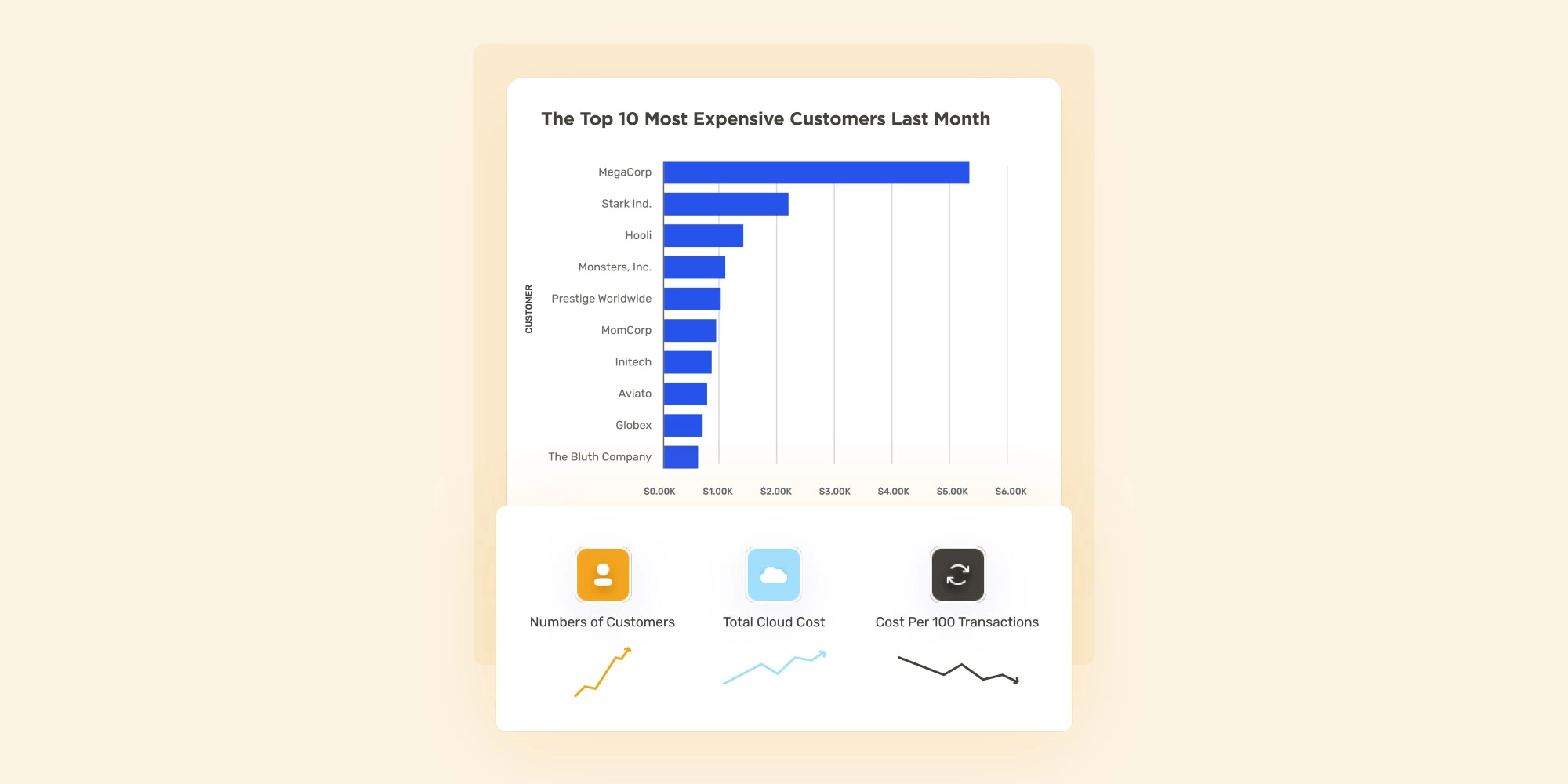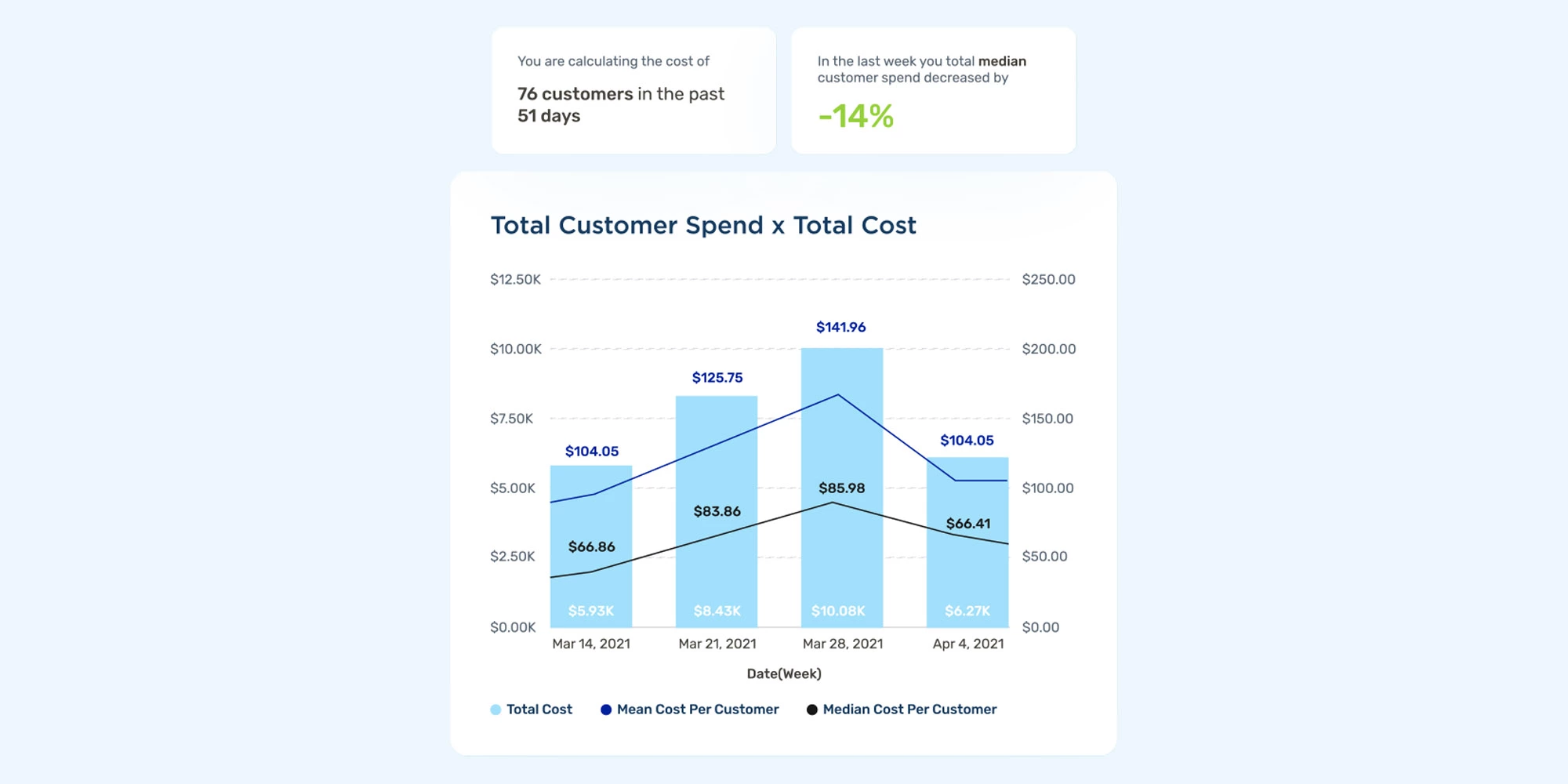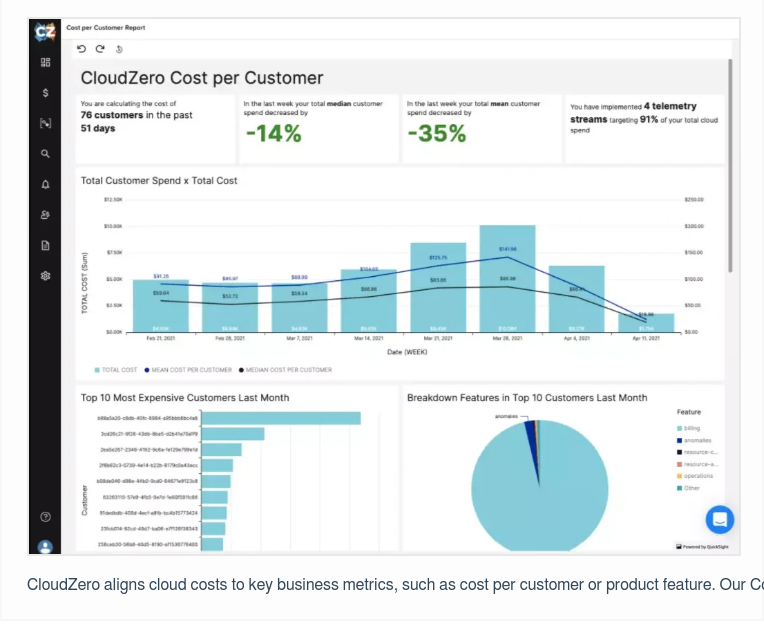If you’re in FP&A, it can sometimes feel like outsiders think your job is all about routine tasks, like tracking budgets and reporting on cost — which couldn’t be further from the truth.
A great FP&A professional deeply understands the business, has a strong command of its metrics, and uses that data to serve as a trusted advisor and partner to stakeholders. You’re not just a “counter” and “tracker” — you’re a driver of strategic outcomes.
However, if there’s one aspect of FP&A that can put even the most seasoned professional on their heels — it’s cloud cost.
For a lot of tech companies, cloud cost is one of the top drivers of COGS‚ and an important lever to improve your margins. Yet, the power to control cloud cost belongs to engineering, and for finance, it’s unpredictable and opaque.
Even when you’re setting budgets or proactively asking for forecasts, your bill arrives at the end of the month, after the money has been spent — and you’re left to chase variances and adjust your models.
But it doesn’t have to be that way. When you align cloud cost to meaningful business metrics, you can use that intelligence to drive some incredibly strategic conversations — and more importantly, outcomes — with your business partners and executive team.
Start By Asking The Right Questions
Before you can start digging into your cloud cost for insights, you’ll need to enlist the help of engineering. Unfortunately, without a deep technical understanding of how your products are architected, it’s probably out of the question for you to try to make sense of it on your own.
Start by making a list of the cost dimensions you’d like to see. These aren’t always easy for engineering to just pull, so you should expect that you might need to petition to make it a priority and help get them the resources they need.
CloudZero is one of the solutions that can help your engineering transform cost into business metrics, but there are a number of approaches they could take.
Here are a few questions you may want to ask:
- What is our cost breakdown by product and feature?
- What is our cost per individual customer?
- If our customers were to double tomorrow, how would our costs change?
- Which customers or kinds of customers (verticals, sizes, etc.) are driving the most cost on a particular feature?
- What is our cost per unit of value? Choose a metric that aligns with your company growth, like transactions, user sessions, etc.
The answers to these questions will unlock patterns that can drive new strategic insight.
Here are six examples of ways you can apply it to your business:
1. Show Your CMO And CRO Which Segments They Should Target
Start by taking a look at the cost to run various segments of your business. Are your costs to support your different customers linear with the revenue you’re getting from them?
Try grouping customers into size (e.g., SMB vs. Enterprise) or industry (e.g., Higher Ed versus Financial Services) and see how they compare. You may be surprised at which segments are most valuable.
With this intelligence, you can make recommendations to your executive team about which ones you should prioritize.

Are your insurance customers twice as valuable as your media customers?
Maybe you should recommend marketing run more insurance campaigns. Or maybe you could suggest to your CRO that the sales team get spiffed when they land a new insurance customer. You may even want to involve customer success to focus their churn reduction efforts on that segment too.
2. Set Better Pricing Concession Guidelines For Sales
Most companies set fairly arbitrary across-the-board pricing guidelines, like “discount up to 10% without manager’s approval.” But what if you knew the cost to support each customer during their free trial? Or you knew exactly how much each feature in their package cost you to support?
With a better understanding of your cost, you can be more specific about when you can afford a discount — or not.
3. Team Up With Account Management On A Renewal Campaign
This one is especially relevant if you work for a SaaS company that sells to large enterprises with expensive contracts.
To get started, ask your engineering team to provide you with a list of how much it costs to support your top 50 highest contract customers (or whatever number makes sense for your business). Compare those cost metrics with their contracts and rank your customers in order from highest margin to lowest margin.

With this insight, you can challenge whoever is in charge of renewals to grow the contracts of the lowest margin customers. With enough lead time, they can set in motion plans to prepare — like creating ROI stories and business cases for those low-margin customers.
If your customers won’t renew at a higher rate, this also might be a good opportunity to reassess if they should be a customer at all.
4. Advocate For Product Management And Engineering To Sunset A Feature
First, take a look at the cost of your individual product features. Then, work with your product and engineering teams to understand how customers are utilizing them and which features they’re getting value from.
They might already have a sense of this from their day-to-day customer interactions, but tools like Pendo and Appcues can also be helpful. You could also recommend they commission a survey or a series of interviews.
Make a list of your low-utilization, low-value features and see which ones are costing you the most. If you have a feature that no one uses that’s also running up your bill — you will want to recommend they either sunset it or turn it off for everyone except the few customers who care.
5. Design New Packaging
There are a number of cost intelligence data points you can use to inform your packaging, but an especially telling one is measuring the cost of each of your customers driving per feature.
For example, you could measure how much “Big Bank USA” is costing you in just their utilization of your analytics feature in the month of June.
This intelligence can be helpful by itself but can be especially useful when you start looking for patterns across segments of companies.
For example, let’s say your business is a SaaS platform with some basic analytics functionality. Maybe your SMB customers use your analytics feature heavily, while your enterprise customers typically graduate off and export the data from your product into a best-of-breed analytics platform.
If those SMB customers are driving up cost, with lower contract value, maybe you want to consider how you price and package for them.
There are endless possibilities for how cost data might drive your packaging decisions, but really granular cost intelligence can certainly help you make better ones.
6. Goal Customer Success On Driving High-Value Feature Utilization
Another lens you can consider adding to your cost per customer and cost per feature data is “stickiness” — meaning, which of your features make your customers want to keep using your product?
Product management and customer success probably have a good handle on which features fall into this category and are thinking about how to drive more usage of them.
By applying cost data, you can flag which of those sticky, customer-loving features would actually be prohibitively expensive were their utilization to double or triple.
You can bring this intelligence to your leadership team, enabling them to make more informed decisions about how to goal customer success. Alternatively, they may want to ask engineering to prioritize optimization efforts for those features.
Drive Strategic Outcomes With Cloud Cost Intelligence
If you’re struggling to get the cloud cost intelligence you need from engineering, CloudZero can help. CloudZero transforms cloud cost data into business-relevant dimensions, like cost per customer, product feature, and more.  and start using cost intelligence to inform your business decisions.
and start using cost intelligence to inform your business decisions.









